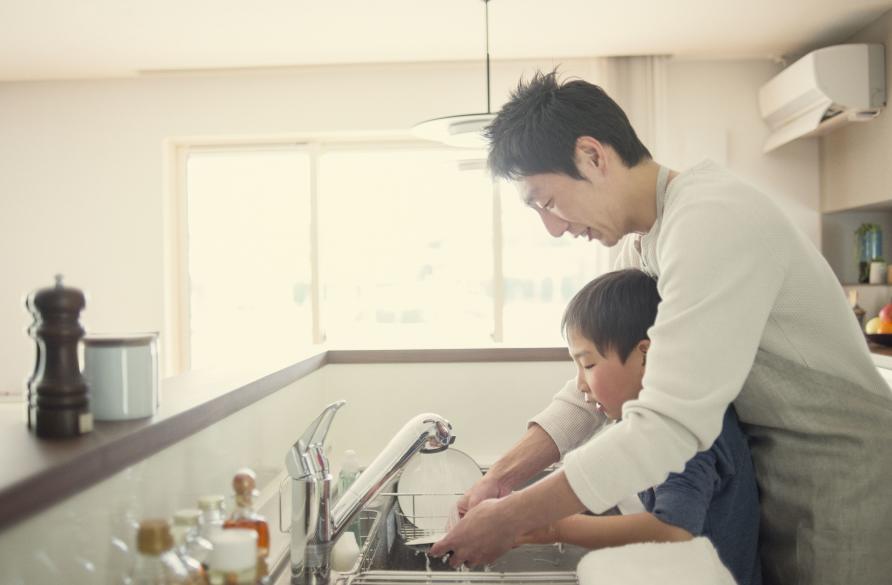Walking the tightrope of work and family

The latest HILDA Survey of households shows that in 2017 both parents are working in more than two thirds (68 per cent) of couples with children aged under 18, and that more than half (56 per cent) of single parents are also working.
We know balancing work and family commitments isn’t always easy, so each year the HILDA Survey asks parents caring for children about how well the demands from their job are fitting in with their family life.
We found that high levels of what we call ‘work-family conflict’ are widespread among Australian parents.

Once working hours are taken into account it is mothers who are experiencing the most conflict.
In more than half of dual-earner couple families (59 per cent), at least one parent experiences high work-family conflict. And in 18 per cent of these families, both parents are reporting high levels of conflict between work and family.
CLICK HERE to use our HILDA Survey comparison tool ‘Australia and You.’
When we look at the raw numbers, fathers have higher levels of work-family conflict than mothers – in 2017, their score averaged 3.9, compared to mothers averaging 3.7. A score above four indicates a high level of conflict.
This result may seem surprising, considering that it’s usually women who juggle most of the unpaid work at home with paid work.
For example, last year’s HILDA report had shown that women do seven more hours of housework and spend six more hours caring for children and elderly or disabled relatives per week than men.
| How the HILDA Survey measures ‘work-family conflict’ |
|---|
| Parents were asked to rank on a scale of 1-7 how much they agreed with the following statements (where 1 is ‘strongly disagee’ and 7 ‘strongly agree’): * Because of the requirements of my job, I miss out on home or family activities that I would prefer to participate in * Because of the requirements of my job, my family time is less enjoyable and more pressured * Working leaves me with too little time or energy to be the kind of parent I want to be * Working causes me to miss out on some of the rewarding aspects of being a parent |
| The ‘work-family conflict score’ represents the average rating across these four statements. Scores higher than 4 indicate a high level of work-family conflict |
Working hours are key to understanding this gender gap in balancing work and family – the longer hours a parent works, the higher their work-family conflict score.
But once we account for working hours, it is mothers who have the highest levels of work-family conflict. And single mothers are particularly affected.
In other words, most working mothers achieve a better balance between the work and family spheres than fathers by working only part-time hours. But while part-time work frees up time for family, it comes with repercussions on earnings, career trajectory and superannuation balances.
High child care costs are another factor putting working parents under pressure.
Since 2001, median out-of-pocket costs for formal care for children not yet at school have increased by 145 per cent to reach $A153 a week in 2017. And while this is in part due to parents using more hours of care, there’s no doubt that hourly costs have also increased considerably.
Not surprisingly then, in 2017 almost half of parents with a child aged four or younger who used, or thought about using, child care reported difficulty with paying for it.
But costs aren’t the only challenge for parents seeking child care. A third of parents reported difficulties finding care at short notice, and over a third (35 per cent) struggled to find care for a sick child.

Parents are worried by the cost of child care and the difficulty of finding care at short notice.
Work-family conflict can have a range of negative consequences. It has been shown to be associated with reduced well-being at home, as well as lower well-being and productivity at work.
Luckily, the HILDA Survey shows that high levels of work-family conflict is a temporary experience for most parents. Around half of parents with high levels of conflict manage to reduce their conflict levels within a year.
But many need to change their working conditions to achieve this, like reducing their working hours, giving up a supervisory role at work or even changing employer or occupation.
Still, a small minority of parents struggle with balancing work and family for years.
Some 13 per cent of parents experience high work-family conflict for at least five consecutive years. And others are quitting work altogether to escape this conflict.
Maintaining a good balance between work and home is clearly important for families, as well as for society and the economy more generally, but the HILDA data suggest that many are struggling to get the balance right.
But there are things we can do better. On the policy front, we need to improve the accessibility and affordability of child care, as well as its fairness.

Maintaining a good balance between work and home is vital for family cohesion.
The introduction last year of an activity test for child care subsidies favours working mothers, but it reduces access to subsidised care for those with lower or irregular work hours, and in so doing, is likely to penalise economically disadvantaged families.
We also need to look at how we can foster the growth of high-quality, part-time jobs.
And on the home front, we need to better share between mothers and fathers the load of unpaid work being done at home … ideally, without creating a whole new source of conflict.
Dr Inga Lass is an academic at the Melbourne Institute of Applied Economic and Social Research. Her research interests include the sociology of work; family sociology, life course research as well as labour market and family policy.













